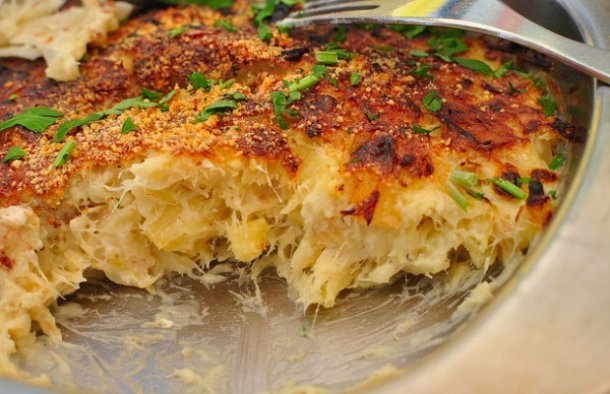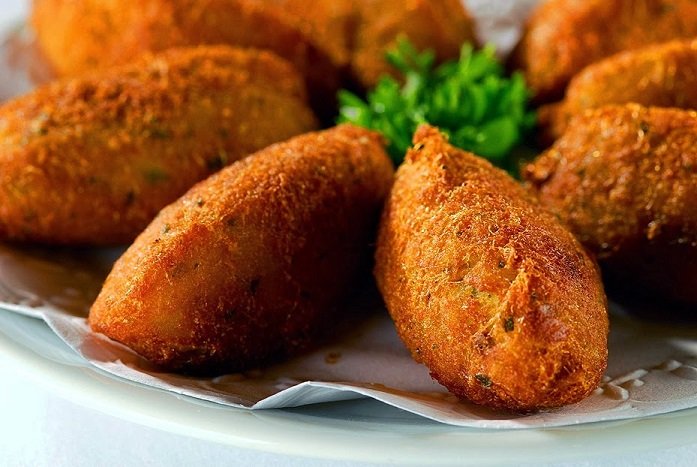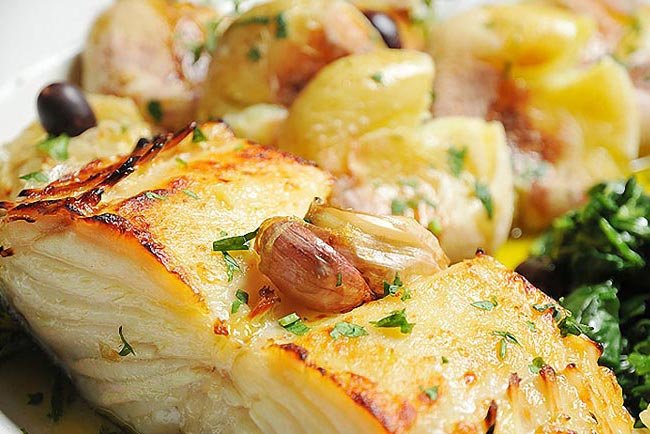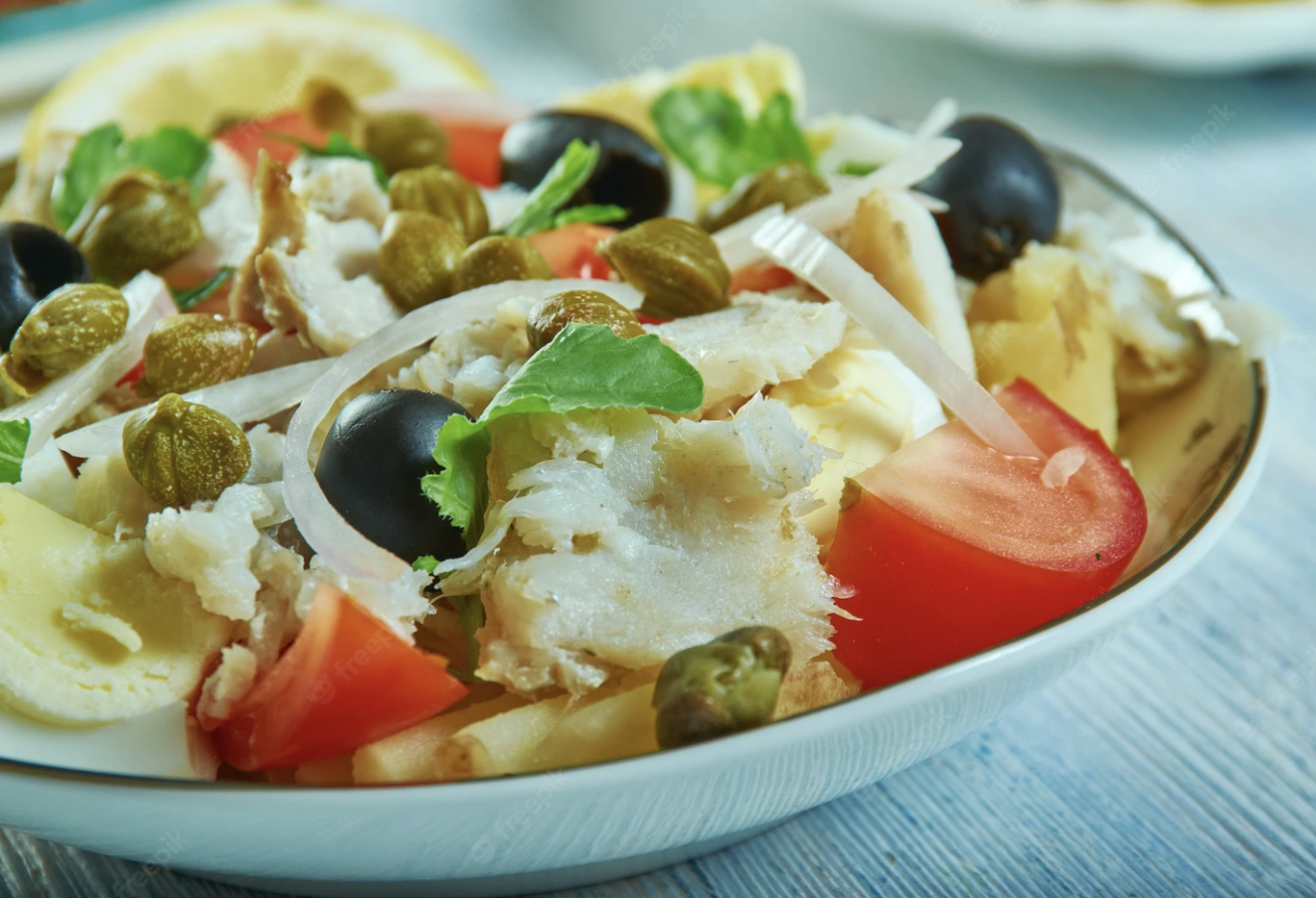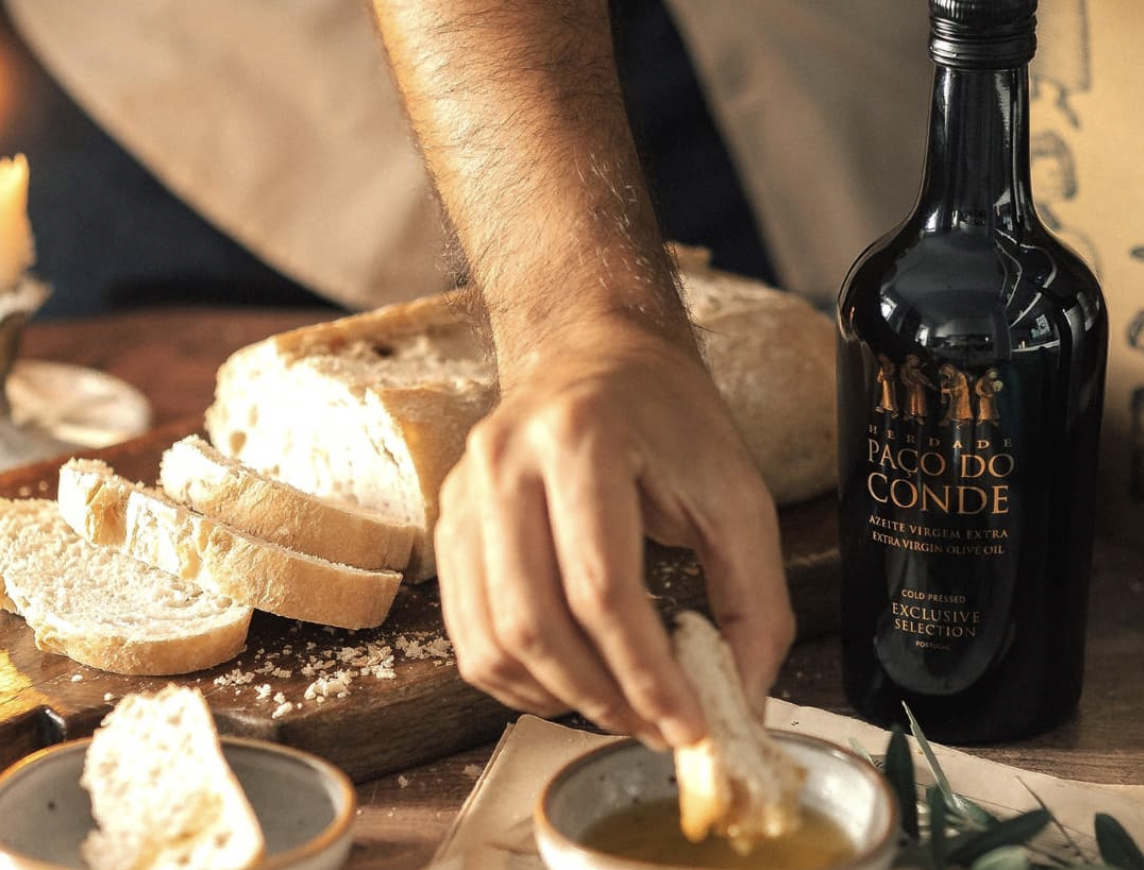A Very Bacalhau Christmas - A Salted Cod Tradition
I have an Italian American friend with whom I often compare notes about all things food and traditions, especially as it relates to our perspective cultures around the holidays. I grew up in a very traditional Portuguese household where every possible dessert and specialty meal had to be made during the Christmas month. My mother once said that, to my dad, it wouldn’t be Christmas if she didn’t make a certain dish. Every grandma and aunt could have it on their tables, but if my mom didn’t make it and have it at home, is just wouldn’t be Christmas.
My friend, too, would tell tales of all night Christmas cookie baking sessions with her mom and nonna that went on for days, all to make sure the dozens of Christmas cookie variations were represented at her family’s table. Exercising generations worth of cooking traditions left everyone exhausted, stressed, and almost wishing for the new year to hurry up and get here already. So, to bring more sanity into our modern lives, my friend and I tried to convince ourselves that “It Would Still Christmas If…” we didn’t do all the things, bake all the cookies, and fry all the variations of dough for the sake of tradition. We said this would make for a great children’s book… and it would, if we actually got around to writing it. So, I guess keeping up with all the traditions will have to do for now.
Enter salted cod. Bacalhau for the Portuguese and Brazilians, baccalà for the Italians, bacalao for the Spanish speakers and some Asian cultures. It wasn’t until the last couple of years that I learned that some areas of Mexico and El Salvador also use this fish in their cuisines, primarily around Christmas time. Makes sense; the practice grew out of the Catholic church’s mandate to abstain from eating meat during important religious holidays like Christmas and Easter. And with the Roman Catholic church’s expansion across the world, the use of this salted fish became the gold standard.
But why this fish specifically, and why salted? The history of Bacalhau can be traced back to the 1400’s during Portugal’s age of exploration. Since refrigeration hadn’t been invented yet, fishermen had to find ways to preserve their catch for prolonged periods of time while out at sea. They learned that salt would pull moisture and dehydrate the fish, and once cured, it would keep for years! Cod’s firm flesh and low levels of oil made it the perfect fish for this preservation method to be successful.
In 1497 Bacalhau became the staple of the Portuguese Navy when they found vast reserves off the coast of Newfoundland off the Canadian seashores.
Cod has a long and important history around the world, including North America. In fact, cod was so prominent in the waters off America’s Northeast, and such an important economic factor for the region, that in 1602 the Cape of St. James was renamed “Cape Cod.”
Bacalhau is central to so many cultures, and is so ingrained in the Portuguese psyche, that there are as many recipes for cod as there are days in the year. So, which recipe do we like the best? A few come to mind:
One of the most popular ones is Bacalhau com Natas (Bacalhau with cream), a rich a creamy potato dish perfect for cold winter days.
There’s Pasteis de Bacalhau, a light croquette traditionally enjoyed as an appetizer or snack. This is the one dish my father needs for Christmas to feel real.
But to me, there’s beauty in simplicity. Two methods we love are:
o Simply baked in the oven with roast potatoes, bathed in a sea of olive oil. The use of a very good olive oil is crucial here.
o Or shredded, uncooked, and served with fresh cut tomatoes, onions, olives, and a side of greens. A Bacalhau salad perfect for warmer days. Again, the use of high-quality olive oil is paramount.
How do you prepare Bacalhau for use?
Wash off the outer layer of salt, then put it in a vat of cold water to soak in the fridge. This soaking process not only desalinizes the fish, but re-hydrates the flesh.
Change the water 2-4 times a day. The length of the soak depends on how thick your pieces are.
After a couple of days, tear off a small piece close to center and taste test it. You don’t want it to be salty, but you don’t want to remove too much salt either.
Ideally you want to start the process at least three days before you need the cuts.
When ready, you can cook immediately, or freeze for future use.
Where can you get Bacalhau?
Our friends at Portugal Imports directly import Bacalhau from one of Portugal’s premiere suppliers. They have everything from ready to eat deboned Bacalhau (if you don’t want to go through the trouble of re-hydrating yourself), premium loin cuts for that perfect presentation, to the whole fish! They also deliver anywhere in the US, so whether you’re in California or want to send to your aunt on the East Coast, they’re the Bacalhau experts.
What wines pair with Bacalhau?
As with all pairings, you’re pairing more the sauces used in a dish, versus the fish itself.
For lighter applications, like the salad mentioned above, a beautiful Alvarinho like our Vale Dos Ares Borras Finas is a great pairing. There’s a touch of salinity in the wine that will complement the fish, but the high acidity brings the whole dish together.
For heartier meals like the baked cod, or Bacalhau com Natas, a more structured white, like Herdade Paço do Conde Reserva White from the Alentejo holds up well to the richness of the dish.
Which Olive Oil do we recommend?
Again, a high-quality olive oil like our Herdade Paço do Conde Extra Virgin Olive Oil Exclusive Selection is a wonderful option. Cold pressed, from a single orchard, fruity and a little peppery, it brings a touch of luxury to any dish, in particular Bacalhau.



